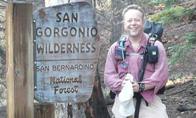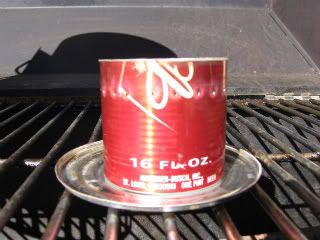Best Stove ?
-
tpfishnfool

- Posts: 62
- Joined: Sun Feb 20, 2011 10:50 am
Looking for a good all around stove for everything from whitney to baldy.
I know Jim does the stove of the week, but whats a good stove that is small and good in all conditions ? REI ?
Thanks..
I know Jim does the stove of the week, but whats a good stove that is small and good in all conditions ? REI ?
Thanks..
-
Burchey

- Posts: 304
- Joined: Tue Dec 28, 2010 11:28 am
-
MattCav

- Posts: 356
- Joined: Thu Sep 23, 2010 4:13 am
i second burchey's post. im guessing jim says either the whisperlite or msr reactor. i really really want a reactor.
-
Hikin_Jim

- Posts: 4688
- Joined: Thu Sep 27, 2007 9:04 pm
It's tough to find that one stove that "does it all" and is the best stove at all times and in all conditions. Take a look at my "personal" stove list down below, and you'll hopefully see what type of stove I use for what type of trip and under what conditions.tpfishnfool wrote: Looking for a good all around stove for everything from whitney to baldy.
I know Jim does the stove of the week, but whats a good stove that is small and good in all conditions ? REI ?
Thanks..
Some questions for you:
-How much money are you planning on spending?
-Are you willing to put up with the "hassle" of liquid fuel stoves and priming? (I put "hassle" in quotes since once you get the hang of it, priming a liquid fuel stove is pretty much no big deal.)
-What's your "style?" Ultralighter? Gotta have bomb proof equipment even if it's a little heavier? Convenience driven? Cost conscious?
-What seasons do you go out in? Year round/four season? Three season including the "shoulder" seasons (early spring/late fall)? Fair weather only?
I can give you a better recommendation if I know what your answers are.
However, I can make some general remarks: If you want a stove that's good in truly all conditions, then in general you either want a remote canister gas stove or a remote liquid fueled stove. If you invert the canister and use only isobutane and propane for fuel, a remote canister gas stove will work down to 0F without needing to employ "tricks" to keep the canister warm, and a remote liquid fueled stove will take you down into arctic conditions. By "remote" I simply mean that the burner and the fuel are separated (a fuel hose connects them).
Some recommendations for a remote canister gas stove:
1. Inexpensive: MSR Rapidfire. (discontinued, but available on eBay)
2. Lightweight: MSR Windpro. (current production)
3. Really low temperatures: Coleman Xtreme. (discontinued, but available on eBay)
For a remote liquid fueled stove:
1. Inexpensive: MSR Whisperlite. (current production)
2. Versatile: Primus Omnifuel which burns canister gas, gasoline, or kerosene. (current production) If I just absolutely *had* to recommend one and only one stove, then this would be it.
3. Rugged & reliable: MSR XGK EX (current production) or earlier versions such as the MSR XGK II (discontinued, but available on eBay)
Now, having said that, most of us don't need to go super cold. If you're generally staying above 20F, there's another excellent option: the MSR Reactor (current production). It's not lightweight, and it's certainly not cheap, but it is one bomb proof stove, and as it's name might suggest, it is one hot stove. The Reactor can take on wind without missing a beat. If melting snow is what you need, this thing's a blast furnace. If you need to go below 20F, it can be done with the Reactor, but you need to employ techniques to to keep the canister warm. If I were camping in a gale on the exposed summit of a peak, I can think of no other stove I'd rather have along.
Just for fun, I'll list my "personal" stoves. These are not "shelf queens." These are the stoves I repeatedly rely on when out on the trail. What they are and when I use them may be illustrative.
LIQUID FUEL
1. Svea 123. An "upright" liquid fueled stove. Not a lot of wind protection. Super reliable. Compact and rugged. Cheap to operate.* Reasonably stable. Good for solo or small group trips. Capable of simmering.
2. MSR Whisperlite. A "remote" liquid fueled stove. Probably my most used stove; it's a realy "workhorse." Cheap to operate, good wind protection. Stable; capable of handling larger pot sizes. Good for small or mid-sized groups. Difficult to simmer. A good all-around stove.
3. MSR XGK. A "remote" liquid fueled stove. Hot! Rugged. Reliable. Stable. Good wind protection. Cheap to operate. This is my "go to" stove for serious winter trips unless I might need to cook in my vestibule. Difficult to simmer.
4. MSR Simmerlite. A "remote" liquid fueled stove. Basically a lighter weight, modernized version of the Whisperlite. I use this stove when I want to carry less weight/bulk but still use liquid fuel. Difficult to simmer.
GAS
1. Optimus Crux. An "upright" canister stove. Small, light, and compact, but poor wind protection. Not super stable. Capable of simmering. Basically a fair weather stove for "fast and light" trips with smaller pots. Does not handle cold weather well.
2. Camping Gaz HP470. An "upright" canister stove. Bigger pot suports, better wind resistance, and more stable than the Optimus Crux but consequently the HP470 weighs more and is bulkier. A fair to moderate weather stove. Does not handle cold weather well.
3. Jetboil PCS. An "upright" canister stove. Efficient. Easy to use. Convenient. Reasonably good wind protection. Not super compact but not particularly bulky either. Pretty stable when the "tripod" (canister legs) is used. Does not handle cold weather well. Capable of simmering. A good intermediate weather stove.
4. MSR Reactor. An "upright" canister stove. Hot! Stable. Efficient. Excellent wind protection. Not light. Not compact -- a bit bulky actually. Capable of simmering; it's tricky, but it can be done. A good extreme weather stove when it's not going to get super cold. Fastest snow melter I know of.
5. Coleman Xtreme. A "remote" canister stove. Good wind protection. Good stability. Special canister design for cold weather which allows for operation down below 0F. If I think it's going to be really cold and I might need to cook inside my tent (or vestibule), then this is my "go to" stove. The thought of priming a liquid fueled stove inside does NOT appeal to me. A winter gas canister stove up like the Xtreme allows me to avoid priming yet still have excellent cold weather performance down to about -10F. Capable of simmering.
Notice that the above five gas stoves start with the lightest duty first and proceed to the heaviest duty.
HJ
*Indeed, "cheap to operate" is true for most liquid fueled stoves. A 110g canister of gas is about $5.00 plus tax. The equivalent liquid fuel is about $0.30 plus tax.
-
simonov

- Posts: 1102
- Joined: Tue Nov 27, 2007 5:44 pm
- Location: Reno, NV
Trolling for Hikin Jim!tpfishnfool wrote: Looking for a good all around stove for everything from whitney to baldy.
I know Jim does the stove of the week, but whats a good stove that is small and good in all conditions ? REI ?
Thanks..
Nunc est bibendum
-
tpfishnfool

- Posts: 62
- Joined: Sun Feb 20, 2011 10:50 am
Thanks Jim ! Looking at the Whisperlight and the Jetboil. Not sure if im going propane or gas.......
-
Hikin_Jim

- Posts: 4688
- Joined: Thu Sep 27, 2007 9:04 pm
Both good, middle of the road choices.tpfishnfool wrote: Thanks Jim ! Looking at the Whisperlight and the Jetboil.
The Whisperlite will handle wind better, can operate in very cold temperatures, can use any pot or pan, and will be cheaper in the long run.
The Jetboil is more compact and more convenient. Just don't rely on the Jetboil's piezo-electric ignition which is notoriously unreliable. The Jetboil will begin to lose efficiency below 40F and will become unworkable as it approaches 20F (at sea level) unless you take steps to warm the fuel. The Jetboil is designed to be used with the Jetboil PCS pot although you could try the little Jetboil adapter with other pots. I'm not sure how well the adapter would work with non-Jetboil pots and pans.
If by "propane" you mean this kind of canister (100% propane),tpfishnfool wrote: Not sure if im going propane or gas.......

I would not recommend it. It'll work, but it's pretty bulky and heavy.
If however you mean this type of canister (dome shaped, threaded, and with some blend of propane, butane, and isobutane),

then I'd say go for it. A propane/butane/isobutane blend in a dome shaped, threaded canister is pretty much the standard for canister gas stoves. For cold weather, buy a brand that contains only propane and isobutane. Do not get fuel with "plain" butane for cold weather. Jetboil brand 100g canisters and Snow Peak brand 110g canisters are both good choices. MSR and Brunton are also good brands but their canisters will not fit inside the Jetboil Pot. I usually just buy Snow Peak since it's the cheapest and is pretty much just as good as Jetboil, MSR, etc.
HJ
-
Hikin_Jim

- Posts: 4688
- Joined: Thu Sep 27, 2007 9:04 pm
Well, yes and no.Burchey wrote: Jetboil is garbage, go with the MSR.
The Jetboil Zip is $70.00. The MSR Reactor is $160.00 (unless you have a secret stove contact on the SGMDF).
Is the MSR Reactor superior to a Jetboil Zip? Stupid question, really. That's like asking if a BMW is superior to a Yugo. The Reactor *way* outclasses a Jetboil. Really, they're not even in the same class.
However, if someone is looking to get a *decent* stove for *moderate* weather trips, the Jetboil Zip will do ya for less than half the price. For a lot of folks, that's going to be sufficient. Just be aware that the Zip is a 0.8L pot whereas the Reactor has a 1.5L pot. For solo use, the Zip will do ya. For more than one person, the Zip is a bit of a stretch. If you're traveling with more folks, you need to either move up to the Jetboil GCS (which has significant wind deficiencies) or move up to a Reactor.
A Reactor is the better snow melter (by far) and is very good in heavy winds. The Zip is lighter and more compact.
The questions to ask are a) what is your budget, b) what kind of trips do you take (wind, weather, etc.), and c) how many people do you typically travel with?
HJ
Edit: Jetboil has recently come out with the "Sumo" pot which is a 1.8L pot similar to other Jetboil pots in that it screws directly on to the burner. I haven't used it, but it's capacity would be similar to a Jetboil GCS or MSR Reactor. The Sumo probably wouldn't be as good for "real" cooking as a GCS, but the Sumo would be more secure on the Jetboil stove and presumably would be relatively wind resistant -- which the GCS is decidedly not.
-
yobtaf

- Posts: 297
- Joined: Fri Jun 12, 2009 8:52 am
Hey Jim what is your take on alcohol stoves? I made a bud light stove for day hikes and it works fine but I dont have anything to compare it to. I know its no Reactor but just wanted your thoughts.


-
Burchey

- Posts: 304
- Joined: Tue Dec 28, 2010 11:28 am
Jim! Baby! He was talkin whisperlite, mang. No mention of the glorius reactor. I'd take a whisperlite over a jetboil anyday. Jetboil - jetschmoil, I always say.
-
tpfishnfool

- Posts: 62
- Joined: Sun Feb 20, 2011 10:50 am
Ok,Ok, Whisperlight it is... Thanks Guys .. 
-
Hikin_Jim

- Posts: 4688
- Joined: Thu Sep 27, 2007 9:04 pm
Comparing an alcohol stove to a Reactor is pretty amusing. Talk about diametric opposites in terms of speed!yobtaf wrote: Hey Jim what is your take on alcohol stoves? I made a bud light stove for day hikes and it works fine but I dont have anything to compare it to. I know its no Reactor but just wanted your thoughts.
A Reactor can boil 500ml of water in under three minutes. An alcohol stove, depending on the type and how well shielded from the wind, will probably take seven to nine minutes.
Alcohol stoves have some distinct advantages:
-light
-cheap (Can you say "DIY?")
-nothing to go wrong
-quiet
-extremely low explosion risk
And some disadvantages
-slow
-vulnerable to wind
-easy to spill
-fuel has less heat per gram so you have to carry more fuel to do the same amount of cooking as compared to petroleum based fuels
-frequently lack any ability to adjust the flame
-not good in cold weather
-poor for snow melting
-poor for large groups
-typically not durable
-frequently not very stable
Alcohol stoves are very popular with long distance ultralight solo hikers that are on routes where they can resupply frequently. If one can resupply frequently, then the heavier fuel requirement of an alcohol stove is minimized.
If one were in an area where resupply is difficult, then the the weight of a conventional stove + fuel is actually less than an alcohol stove even though the alcohol stove itself is extremely light. Alcohol just doesn't have a lot of heat content whereas petroleum fuels are heat packed.
One almost always needs a wind screen with alcohol stoves which are quite vulnerable to wind. Not a big deal -- unless you forget to bring one.
The real fact of stoves is that, as in life in general, it's all about trade offs. When you compare different stoves, you have to asses which is more valuable to you. One person may say that the extra speed and extreme weather functionality of a Reactor is worth the weight, bulk, and cost. Another person might think that the Reactor is nuts for those very same reasons.
One person may want the flexibility of an Omnifuel which can operate on three different classes of fuel. Another person might think that running on white gas every where, every time is perfectly acceptable.
One person may value light weight over all else. Another person may consider reliability to be the most important factor in selecting a stove.
You have to look at what type of trips you do in what conditions, with how many others, and where. You then have to weigh the various trade offs between different types of stoves and make your choice.
Alcohol is, as I say, very popular with ultralight long distance soloists. I personally carry an alcohol stove on "fast and light" type trips where I don't want a lot of weight and bulk AND where I have reason to believe that the weather will be good. I wouldn't exactly call an alcohol stove a heavy weather stove (unless you're talking about a Trangia 25 or 27 or something of that order).
HJ
-
Hikin_Jim

- Posts: 4688
- Joined: Thu Sep 27, 2007 9:04 pm
Good choice! I bought my Whisperlite in 1987. It's still going strong. As I have said, it's my "go to," work horse stove.
If you're interested in one, drop me a PM. I can hook you up for less than retail. I've got fuel bottles as well.
HJ
-
yobtaf

- Posts: 297
- Joined: Fri Jun 12, 2009 8:52 am
Thanks for the info Jim. Your thoughts on why to carry it is why I made it. Plus I just like making things. Its nice to throw it in a day pack with 2 oz of fuel for making some hot chocolate or noodles. I think with my modified grease pot its about 5oz's for a cookset.
All good info you posted here to learn from. Thanks
All good info you posted here to learn from. Thanks
-
Hikin_Jim

- Posts: 4688
- Joined: Thu Sep 27, 2007 9:04 pm
Psst, hey, buddy. Wanna buy a stove?
Seriously though, we are in the process of moving, and I would like to sell some of the stoves I have. I generally can do better than retail. Never hurts to see what I've got. If you can do better elsewhere, go for it.
HJ
-
tpfishnfool

- Posts: 62
- Joined: Sun Feb 20, 2011 10:50 am
Ok. Bought the Whisperlight and used it on whitney this season and liked it alot in altitude. But... For the lower elevation trips I do around the san gabriels, I found a really cool small easy to use isopro fuel stove. Snow Peak gs 100 igniter.
Love this little (size of a pack of gum) stove. All I did was get a foot for the gas bottle to make it more stable and it is my fave low altitude stove.
Just an FYI
Love this little (size of a pack of gum) stove. All I did was get a foot for the gas bottle to make it more stable and it is my fave low altitude stove.
Just an FYI
-
Hikin_Jim

- Posts: 4688
- Joined: Thu Sep 27, 2007 9:04 pm
Gas stoves should do reasonably well even at altitude -- unless it's very cold or very windy, two things that frequently occur at altitude.tpfishnfool wrote: Ok. Bought the Whisperlight and used it on whitney this season and liked it alot in altitude. But... For the lower elevation trips I do around the san gabriels, I found a really cool small easy to use isopro fuel stove. Snow Peak gs 100 igniter.
Love this little (size of a pack of gum) stove. All I did was get a foot for the gas bottle to make it more stable and it is my fave low altitude stove.
Just an FYI
The Whisperlite is a good stove. It's strengths are:
-Good pot stability
-Ability to handle larger pots
-Ability to handle wind
-Cheapness of operation
-Ability to handle cold
-Can bring exactly the amount of fuel you need
-Easy to tell how much fuel you have left
It's weaknesses are:
-Requires priming
-Flame isn't very adjustable
-A little on the bulky side
The GS-100 is also a good stove. It's strengths are:
-Convenience (no priming, just light and go)
-Compactness
-Very adjustable flame
It's weaknesses are:
-Very concentrated flame can lead to "hot spots" (burnt spots)
-Vulnerable to wind
-Not much good below about 20F throughout the life of the canister. Fresh canisters will handle cold far better.
-More expensive fuel
-Generally must take only those amount of fuel commonly sold (4oz, 8oz, or 16oz)
-Somewhat challenging to tell how much fuel you have left
-Can't handle larger pots
-Pots are easy to knock off the stove
I own both of those stoves. Depending on the type of trip, time of year, number of people going, etc, I might take one or the other. Both are good stoves. Many people consider the GS-100 the "gold standard" for small upright canister stoves.
HJ
